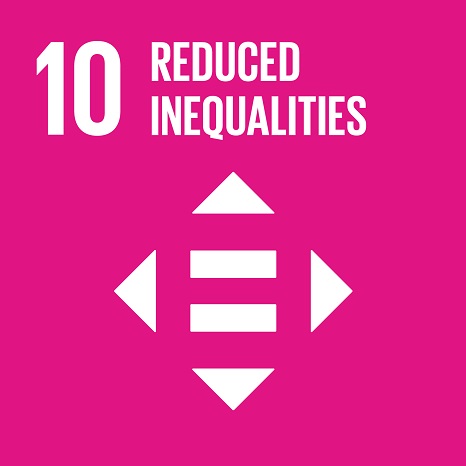The inequality effect in the well-being of European OECD countries: a new perspective on data addressing the multidimensionality of the concepts
Event Title
16th edition of the IAOS Conference, Better Statistics for Better Lives
Year (definitive publication)
2018
Language
English
Country
France
More Information
Web of Science®
This publication is not indexed in Web of Science®
Scopus
This publication is not indexed in Scopus
Google Scholar
This publication is not indexed in Google Scholar
This publication is not indexed in Overton
Abstract
Social inequality refers to the uneven distribution of resources in a society that can lead to systematically and unfair advantages/disadvantages in peoples’ life circumstances and opportunities. In populations all over the world, people with fewer resources have worse chances in life, health and well-being. Additionally, inequality hinders not only the people on the bottom of the social rank, but also the general population: in more unequal societies there is a higher incidence of a wide range of health and social problems such as criminality and poverty, fewer chances of economic growth, and higher unbalances in political representation, that can seriously undermine the fairness of political and economic institutions. Despite the consistence of its implications, social inequality is not a one-dimensional construct. Addressing social inequalities, implies not only addressing the degree of concentration or dispersion of valued goods, but also the correlation among these valuable features, and their plural implications in peoples' life circumstances – a multidimensional approach of social inequality is therefore advised.
We explore the well-being inequalities in Europe building upon the OECD Framework For Measuring Well-Being And Progress. In this scope, well-being is understood as a multidimensional concept, framed by material conditions, quality of life and sustainability, and expressed by eleven well-being dimensions – income and wealth, jobs and earnings, housing, health, education, work-life balance, environment, social connections, civic engagement, safety and subjective well-being. Taking European Social Survey as the main empirical source, the interplay between key distributional (education, income) and categorical (gender, social class) dimensions of social inequalities in well-being and well-being profiles was studied, under two levels of analysis of the OECD European social space – transnational (across individuals) and national (across countries).
Social inequalities on well-being scores and well-being profiles were identified. Higher education, higher income, and belonging to a more privileged social class positively influence well-being; men tend to present higher well-being than women. The four well-being profiles identified among Europeans were shown to be clearly structured by social inequalities, opposing higher- and lower- qualified socio-occupations, and males and females' life circumstances (Low-wage earners well-being profile, Elite well-being profile, Female well-being profile, Male well-being profile). At a country level, profiles are mostly defined in terms of volume of well-being, expressing regional affiliations (with a exception of one profile) and asymmetries of income, education, and class structures (Nordic high-rank well-being profile; Central Europe medium-rank well-being profile; Southern Europe medium-rank well-being profile; Eastern Europe low-rank well-being profile; Social disengagement low-rank well-being profile).
The developed analysis confirms the existence of multidimensional intersections between well-being and categorical and distributive social structuring variables.
Acknowledgements
--
Keywords
well-being inequality,OECD European countries,multidimensionality
Fields of Science and Technology Classification
- Sociology - Social Sciences
Related Projects
This publication is an output of the following project(s):
Contributions to the Sustainable Development Goals of the United Nations
With the objective to increase the research activity directed towards the achievement of the United Nations 2030 Sustainable Development Goals, the possibility of associating scientific publications with the Sustainable Development Goals is now available in Ciência_Iscte. These are the Sustainable Development Goals identified by the author(s) for this publication. For more detailed information on the Sustainable Development Goals, click here.

 Português
Português


